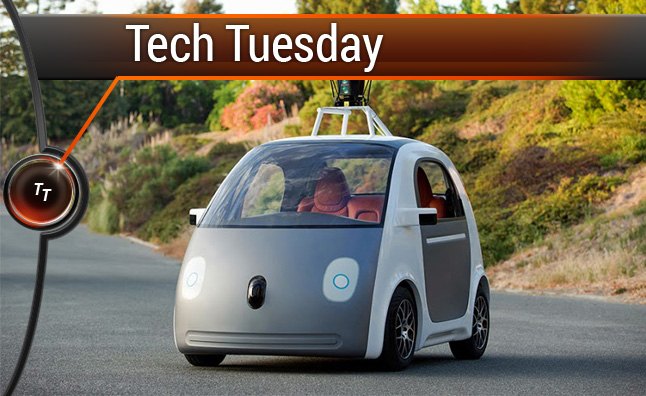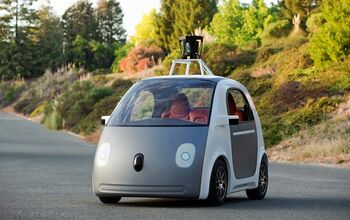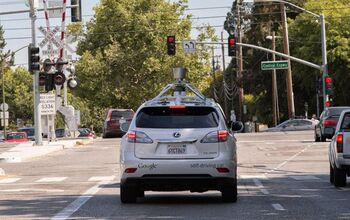What You Need To Know About Autonomous Vehicles

Self-driving cars are no-longer solely in the realm of science fiction, as several automakers are working on a way to make cars drive themselves and make you just a helpless passenger along for the ride.
While automakers work away, it may be a while before we see any of these cars on the road, as some legislation is keeping them at bay. Understandably the governing powers seem to be concerned about letting untested technology share the streets with the general public, as there are worries about endangering lives and property.
Currently only four states and the District of Columbia permit self-driving cars. Those states include: Michigan, Florida, Nevada and California. Notably, California has several new rules in place for manufacturers that are planning to test a self-driving car in public. This includes a mandatory $5 million insurance policy and a fleet that doesn’t exceed 10 vehicles. Additionally, any accidents or incidents where the autonomous driving function needs to be overridden must be reported to the DMV.
SEE ALSO: California DMV Announces New Self-Driving Car Rules
Pros/Cons
It’s easy to see why people are so interested in self-driving cars. In theory, these cars could help cut down on accidents and fatalities on the road. They could operate regardless of the age or condition of its passengers. They could also drive themselves to a service center for maintenance or repairs. For the driver, they open up the time otherwise spent commuting for more productive or leisurely activity. Finally, all the mental frustration of being lost in an unfamiliar area could be eliminated.
On the other hand, for every advantage an autonomous vehicle, there seems to be an unanswered question too. For example, if an accident does occur, who is liable? Should self-driving cars have redundant controls for an operator to take control? How reliable and secure is the software behind autonomous cars? What would happen to individuals whose livelihood depended on driving a vehicle, like bus drivers, truck drivers and taxis?
Beyond the concerns about safety many want to know how much an autonomous vehicle will cost. A survey conducted by JD Power in 2012 pointed out that while 37 percent of respondents would consider buying an autonomous vehicle, only 20 percent would consider it if the feature cost $3,000 or more.
Features Available Right Now
Though there’s no real idea of how much more an autonomous car would cost over a normal vehicle, much of the technology we have today already offers a semi-autonomous driving experience. Modern cars feature computers and processors that can operate the brakes, throttle and even steering in order to help achieve a smoother, easier and potentially safer driving experience. For example, the suite of driver assists on the 2015 Ford Fusion Titanium costs $3,090 and includes lane-keeping assist, adaptive cruise control and a system that can parallel park the car for you.
SEE ALSO: Google Builds its Own Self-Driving Cars
The Fusion and many other cars currently for sale use cameras and radar to “see” the world around them. The cameras are used to detect lane markings, while the radar systems can measure how close an object is to the vehicle. Pairing these sensors up to the computers that control throttle, braking and steering software means that the car can stay in the middle of a lane and prevent rear-end collisions. But there’s a big difference between semi-autonomous and fully autonomous vehicles.
Semi-autonomous vehicles still need a human to watch out for pedestrians, red lights and stop signs among other things. For example, these cars can’t navigate their way through an intersection without driver assistance. A fully-autonomous car is designed for you to input a destination and then sit back and relax until you arrive.
New Ways For Cars to See
Self-driving cars use cameras and radar along with other new technologies. Chief among them is lidar, a technology that acts like radar, but with a laser. Notice how most autonomous vehicles have a funny looking hat or cone on top of them? That’s the lidar array. By using a laser instead of a micro-wave (like in radar), lidar can detect things that a radar system can’t. Additionally, lidar can help provide a high-resolution map of the terrain to the cars computer.
That technology provides an excellent concept of depth and spatial awareness for the car’s computer, while other systems help keep the car on the road. A GPS system helps pinpoint the vehicles location and the route it needs to take to get to its destination. The cameras and associated software outfitted to self-driving cars are a bit more advanced than what we have on the roads today. Instead of just looking for repeating patterns like lane markings and speed limits, these cameras can pick out other vehicles, road signs, pedestrians, bikers and signals. This information helps the car operate on the streets with less driver involvement.
Additionally, some self-driving cars are connected to the Internet, helping to get them up-to-date information about the streets they are driving on. Other autonomous prototypes have the ability to talk to one another using an Internet connection. This helps the cars know where they are in relation to each other.
A few of these connected cars actually send the information they gather on the world around them to a computational farm, which will crunch all that data quicker than the car can. As the car constantly gathers a ton of data, there may be too much for its humble computer to handle. Instead the data is sent to a network of supercomputers that can decipher the information and send that back to the car in a bite sized form that can tell the car what to do.
Where and When?
But in order to get more data, prototypes may need to drive on the road with other vehicles.
In spite of this slow adoption by state governments, automakers and tech companies are continuing to develop self-driving cars. Many think the technology is just a few years away. Google and Nissan expect self-driving cars to be possible by 2020. While the technology is currently available, the laws and perception of safety are the biggest hurdles to overcome before autonomous cars become a reality on our roads.

Sami has an unquenchable thirst for car knowledge and has been at AutoGuide for the past six years. He has a degree in journalism and media studies from the University of Guelph-Humber in Toronto and has won multiple journalism awards from the Automotive Journalist Association of Canada. Sami is also on the jury for the World Car Awards.
More by Sami Haj-Assaad



































Comments
Join the conversation